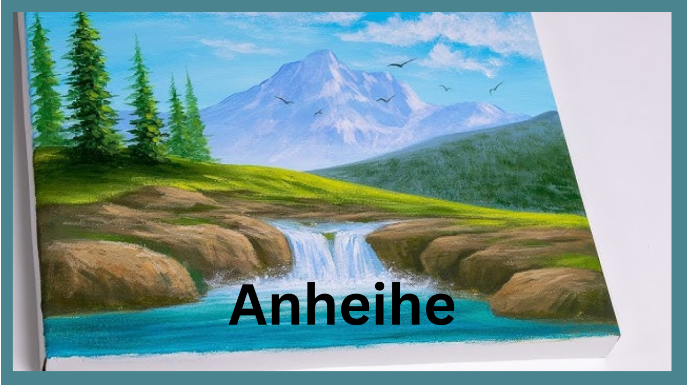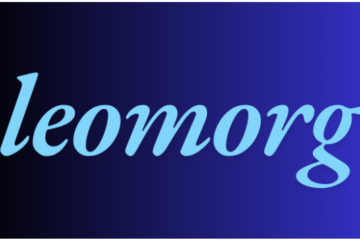Introduction
Anheihe is a term that sparks curiosity and intrigue among those who come across it, often leaving them eager to understand its meaning, origins, and relevance in various contexts. The term’s unique structure and mysterious quality make it a fascinating subject for exploration. Whether you encountered the term while conducting research or during casual conversations, this guide aims to offer a deeper understanding of Anheihe, its possible meanings, and its growing significance in contemporary discussions. From its origin to its use in modern culture, we will explore the different layers of Anheihe’s presence in the world.
Table of Contents
What is Anheihe?
Anheihe is a concept that is open to various interpretations. The term does not appear to have a fixed definition, which makes it all the more interesting to those who are curious about its origins and significance. Some may view Anheihe as an abstract term, while others may see it as a name or concept embedded in personal or cultural contexts. In this article, we explore the diverse meanings and uses of Anheihe, focusing on its potential roles in language, culture, and society.

The Origins of Anheihe
The origins of Anheihe remain a topic of intrigue and speculation. Unlike established words or names that can be traced back to specific languages or cultural traditions, Anheihe does not have a clear and widely accepted origin. It could be an acronym, a coined term, or even a name with personal significance that varies from one individual to another.
What makes Anheihe intriguing is the lack of a universally accepted definition, allowing it to transcend the usual boundaries that define words and concepts. Its flexible and open-ended nature makes it a perfect candidate for interpretation, and it can evolve based on the perspectives of those who engage with it. The absence of a concrete origin gives Anheihe an almost mythical quality, inviting deeper exploration and creativity.
Interpretations of Anheihe
Given its ambiguous nature, the term Anheihe lends itself to multiple interpretations. For some, it may symbolize balance and harmony. The “an” could represent tranquility, while “heihe” might evoke a rhythmic or flowing sense of unity. This interpretation aligns Anheihe with positive concepts of well-being and equilibrium.
On the other hand, others might consider Anheihe a modern phenomenon, particularly in the realm of internet culture. In this digital age, new terms are often coined or gain popularity through social media platforms, memes, and online communities. As a result, Anheihe may have evolved into a symbol of internet culture, representing something elusive, experimental, or open to interpretation.
The beauty of Anheihe lies in its ability to adapt to the diverse perspectives of different individuals. Its flexible nature allows it to take on different meanings, making it a concept that can be explored through various lenses.
Anheihe in Culinary Culture
Though Anheihe may not have an established definition, it has found its way into several cultural and culinary discussions. It could also refer to a savory dish, possibly drawing from the rich traditions of rural communities that have shaped culinary practices over time. If interpreted as such, Anheihe might consist of a blend of meats, vegetables, and spices, cooked to perfection to create a satisfying and flavorful meal.
The Origins and Evolution of Anheihe as a Dish
The origins of Anheihe as a dish are shrouded in the traditions of ancient cooking practices, where resourcefulness and creativity in the kitchen were crucial. It’s believed that Anheihe, in its culinary form, originated in rural communities that valued simple yet flavorful meals, made from locally sourced ingredients.
Over the years, Anheihe evolved from a humble, everyday dish into a celebrated delicacy, often served during significant cultural celebrations, family gatherings, or even upscale culinary events. Its history reflects the way traditional meals adapt to the changing social and economic landscape, influencing its contemporary popularity.
Cultural Significance of Anheihe
Anheihe’s cultural significance goes beyond its taste. In certain regions, the preparation and sharing of Anheihe are tied to important rituals and traditions. It is often prepared during festive occasions, symbolizing unity, prosperity, and community spirit. The act of cooking and sharing Anheihe with loved ones brings people together, reinforcing the bonds that tie families and communities.
This cultural connection highlights how food can serve as a vessel for tradition and a source of connection between generations. As Anheihe has grown in popularity, it has come to represent not just a meal but also the shared values and practices that bind people together.
Modern Adaptations of Anheihe
In today’s world, Anheihe has undergone various transformations to meet modern tastes and dietary preferences. Globalization and the increasing interest in diverse cuisines have brought Anheihe to the attention of food enthusiasts around the world. Chefs and home cooks alike have adapted the dish to include contemporary ingredients and cooking methods, ensuring its place in modern gastronomy.
Anheihe’s appeal lies in its versatility, as it can be adapted to a variety of dietary preferences, including vegetarian, gluten-free, and vegan versions. These adaptations help make Anheihe more accessible to a wider audience while still preserving the essence of its traditional flavors.
Anheihe’s Impact on the Local Economy
The popularity of Anheihe has had a positive impact on the local economy, especially in regions where it is a staple dish. The demand for ingredients used in Anheihe, such as meats, vegetables, and spices, supports local farmers and suppliers. Additionally, the dish’s widespread popularity has opened opportunities for restaurateurs and culinary entrepreneurs, leading to the creation of restaurants, festivals, and events that focus on the dish.
As culinary tourism continues to grow, Anheihe has become a key attraction for food lovers who seek authentic and unique gastronomic experiences. The dish’s influence on the local economy extends beyond just food production and tourism, helping to preserve traditional farming methods and support sustainable agriculture.
Anheihe’s Health Benefits
In addition to its rich cultural and culinary significance, Anheihe offers several health benefits. The dish is made from a variety of fresh ingredients, including lean meats, vegetables, and herbs, all of which are rich in essential vitamins and minerals. These ingredients contribute to a balanced, nutrient-rich meal that supports overall health and wellness.
Anheihe’s nutritional value also stems from its ability to provide high-quality protein, fiber, and antioxidants, which help promote a healthy immune system, improve digestion, and boost energy levels. When consumed as part of a balanced diet, Anheihe can be a nourishing and satisfying meal that contributes to long-term health.
Sustainability and Ethical Considerations
While Anheihe’s popularity continues to rise, concerns regarding its sustainability and environmental impact have emerged. In particular, the sourcing of ingredients and the methods used in farming and food production have come under scrutiny. Efforts to promote responsible sourcing practices, such as sourcing ingredients from local, organic farms and supporting sustainable fishing practices, are gaining momentum in the culinary world.
Additionally, the ethical treatment of animals, especially in the context of dishes that contain meat, has become a major topic of discussion. As the demand for Anheihe grows, it is important to ensure that the dish’s ingredients are sourced in a way that aligns with ethical and environmental standards.
Anheihe’s Global Reach
Though Anheihe is rooted in specific regions, its influence has spread worldwide, inspiring various adaptations of the dish in different cultures. As globalization continues to connect people across borders, Anheihe has become a symbol of culinary exchange, bringing together flavors and techniques from around the globe.
In many countries, chefs and home cooks have experimented with Anheihe, incorporating local ingredients and cooking traditions to create their own versions. This cross-cultural adaptation has enriched the dish and made it a global phenomenon, enjoyed by food lovers from all walks of life.
Anheihe in Popular Culture
Anheihe’s appeal extends beyond the kitchen and into popular culture. It has appeared in various forms of media, including literature, music, and film, where it is often used as a symbol of tradition, nostalgia, and the importance of culinary heritage. Through these cultural representations, Anheihe continues to inspire new generations, reminding them of the importance of food as a source of connection and identity.
Controversies Surrounding Anheihe
Despite its widespread popularity, Anheihe has not been without its controversies. Ethical concerns related to the sourcing of ingredients, the environmental impact of food production, and the treatment of animals have sparked debates within culinary communities and beyond. These discussions highlight the need for greater awareness of the environmental and social implications of our food choices.
The Future of Anheihe
Looking ahead, Anheihe’s future is filled with potential. As society becomes increasingly aware of issues like sustainability, ethical sourcing, and the importance of preserving culinary traditions, Anheihe is likely to continue evolving. Advances in technology, such as lab-grown meat and plant-based alternatives, may offer new ways to enjoy Anheihe while minimizing its environmental impact.
Additionally, as more people around the world become exposed to Anheihe, its role in global cuisine is likely to expand. Whether through digital platforms, culinary tourism, or local restaurants, Anheihe is poised to remain a beloved and influential dish in the years to come.
Exploring the Impact of Anheihe in Modern Society
Anheihe, though not universally recognized, is a term that can hold various meanings and functions within modern society. Whether as a cultural concept, a food trend, or a philosophical idea, Anheihe is a reflection of how words and practices evolve in a globalized world. Understanding its impact allows us to appreciate how flexible and adaptive language and culture can be. In this section, we’ll delve into how Anheihe is influencing different facets of contemporary life.
The Digital Evolution of Anheihe
As society shifts further into the digital age, new terms like Anheihe can take on a life of their own within online spaces. Social media platforms, blogs, and digital forums are often the breeding grounds for the creation and dissemination of new words or concepts. Anheihe could very well be part of this growing lexicon, with individuals in online communities creating personal meanings or shared experiences around it.
One of the reasons Anheihe has gained attention in these spaces is its open-ended nature. It’s a term that can be shaped and molded by the users of these platforms. In meme culture, for example, a term like Anheihe could be adopted as an inside joke or a way of expressing a feeling or reaction that doesn’t have a specific word associated with it. This is the beauty of digital culture – it takes language and creates its own rules for meaning.
Anheihe and Social Movements
Another interesting area where Anheihe could play a role is in social movements. Just as words like “freedom” or “unity” have been adopted by movements worldwide to convey a sense of purpose, Anheihe might emerge as a word that symbolizes a collective goal, thought, or cause. Whether it becomes a slogan for an environmental movement, a call to action for social justice, or a term for advocating self-expression, Anheihe’s fluidity allows it to seamlessly fit into various types of social discourse.
Anheihe as a Symbol of Innovation
In a world where innovation is constantly celebrated, Anheihe may represent a symbol of newness, change, or breaking away from traditional norms. From tech startups to the creative arts, companies and individuals who seek to disrupt industries and challenge status quos may adopt Anheihe as a branding tool or a symbol of their mission. Its vague and undefined nature makes it an ideal candidate for a modern term that can be used to communicate ideas of progress and transformation.
Moreover, Anheihe could also become a catchword for creative collaboration and innovation. It might represent the synergy between diverse thinkers, creators, and innovators who work together to create something greater than the sum of their parts. This concept of collaboration, encapsulated by a term like Anheihe, could further inspire networks of individuals united by a common vision.
The Philosophical Implications of Anheihe
On a deeper level, Anheihe could have philosophical implications. As a term that doesn’t have a fixed meaning, it might represent the idea that meaning itself is fluid, subjective, and open to interpretation. In a world where definitions are often imposed by authority or consensus, Anheihe can stand as a reminder of the complexity of understanding and the individual nature of perception.
Some may view Anheihe as a challenge to the very nature of language. If language shapes thought, then a word like Anheihe could suggest that ideas themselves are not as rigid as we think. In this sense, Anheihe could invite us to think more broadly about how we construct meaning and how those meanings can shift over time. Philosophers and linguists might find value in this idea of a “blank canvas” term, a word that allows for unlimited interpretations and possibilities.
Anheihe in Education and Learning
In the world of education, terms like Anheihe could be used to provoke curiosity and critical thinking. Teachers and educators might introduce it as an exercise in interpreting ambiguous concepts, prompting students to think outside the box and engage with abstract ideas. This exercise in flexibility could be used in philosophy, linguistics, or even in creative writing classes where the aim is to explore meaning-making and how words can be shaped and reshaped by context.
By introducing Anheihe into educational spaces, instructors can demonstrate the power of language to evolve and change with time. Students may learn not just the definitions of words, but also the importance of context and interpretation in understanding language. This approach could help foster a deeper understanding of how language functions in society and how it can be used to express complex ideas.
The Role of Anheihe in the Arts
As an abstract term, Anheihe could serve as a canvas for artistic expression. It might inspire musicians, poets, and visual artists to explore themes of ambiguity, transformation, and the fluidity of meaning. Artists could use Anheihe as a starting point for creating works that challenge traditional notions of definition and invite their audiences to engage with art in a way that is open-ended and interpretative.
For instance, a musician might compose a piece titled “Anheihe,” using experimental sounds to evoke the feeling of uncertainty or change. Similarly, a painter might create a series of works that explore the concept of Anheihe, with each piece representing a different interpretation of the term. The artistic community thrives on innovation and pushing boundaries, and Anheihe, with its limitless potential for meaning, could serve as the perfect symbol for artistic exploration.
Anheihe in Global Conversations
Anheihe’s flexibility makes it a strong candidate for inclusion in global conversations. As the world becomes increasingly interconnected, terms like Anheihe might transcend borders and be used across different cultures and languages. Its lack of a specific definition means that it can be easily adapted to different linguistic contexts, making it accessible to people from diverse backgrounds.
Moreover, Anheihe could serve as a bridge between different cultural perspectives. In global discussions about human rights, climate change, or peace-building, Anheihe could symbolize a shared vision or goal. Its open-ended nature allows people from different walks of life to find their own meaning in it, leading to a more inclusive and interconnected dialogue.
Anheihe in Popular Media
In media, whether in literature, film, or television, Anheihe could appear as a powerful symbol for transformation or ambiguity. It could be the name of a mythical place, a mysterious object, or even a character whose actions represent the complexity of meaning. Its potential for deep symbolism makes it an ideal term for exploration in storytelling.
For example, a science fiction novel might explore the idea of Anheihe as a concept that challenges the boundaries between reality and illusion. A television series could use Anheihe as the name of a movement or group that represents a shift in societal values. In film, Anheihe might be portrayed as a powerful, enigmatic force that drives the plot forward.

Conclusion: The Endless Possibilities of Anheihe
Anheihe is a term with vast potential and many interpretations, from digital culture and culinary traditions to social movements and artistic endeavors. Its flexibility and adaptability make it an ideal symbol of modern innovation and the fluidity of meaning in today’s world. As we continue to explore Anheihe in different contexts, we open the door to endless possibilities for interpretation, collaboration, and creative expression.
Its lack of fixed meaning invites us to think more deeply about how language functions and evolves. As a result, Anheihe is more than just a term; it is a concept that embodies the spirit of change, transformation, and the power of individual interpretation in an ever-evolving world.
FAQs
Is Anheihe a widely known term?
Anheihe is not widely known, but its ambiguity and adaptability make it a fascinating concept for exploration in various fields, from digital culture to philosophy.
Can Anheihe be a part of global conversations?
Yes, due to its open-ended nature, Anheihe has the potential to transcend cultural and linguistic barriers, becoming a symbol in global discussions about shared values and goals.
How is Anheihe related to digital culture?
Anheihe fits well into digital culture due to its ability to be molded and redefined by online communities, making it a term that can evolve and change in meaning depending on context.
What role does Anheihe play in artistic expression?
In the arts, Anheihe can serve as a symbol of ambiguity, transformation, and creativity, inspiring artists to explore abstract ideas and challenge traditional definitions.
Can Anheihe be used in education?
Yes, Anheihe can be used in educational settings to encourage critical thinking and exploration of abstract concepts, fostering a deeper understanding of language and meaning-making.
For any kind of updates please visit Fsiblog



